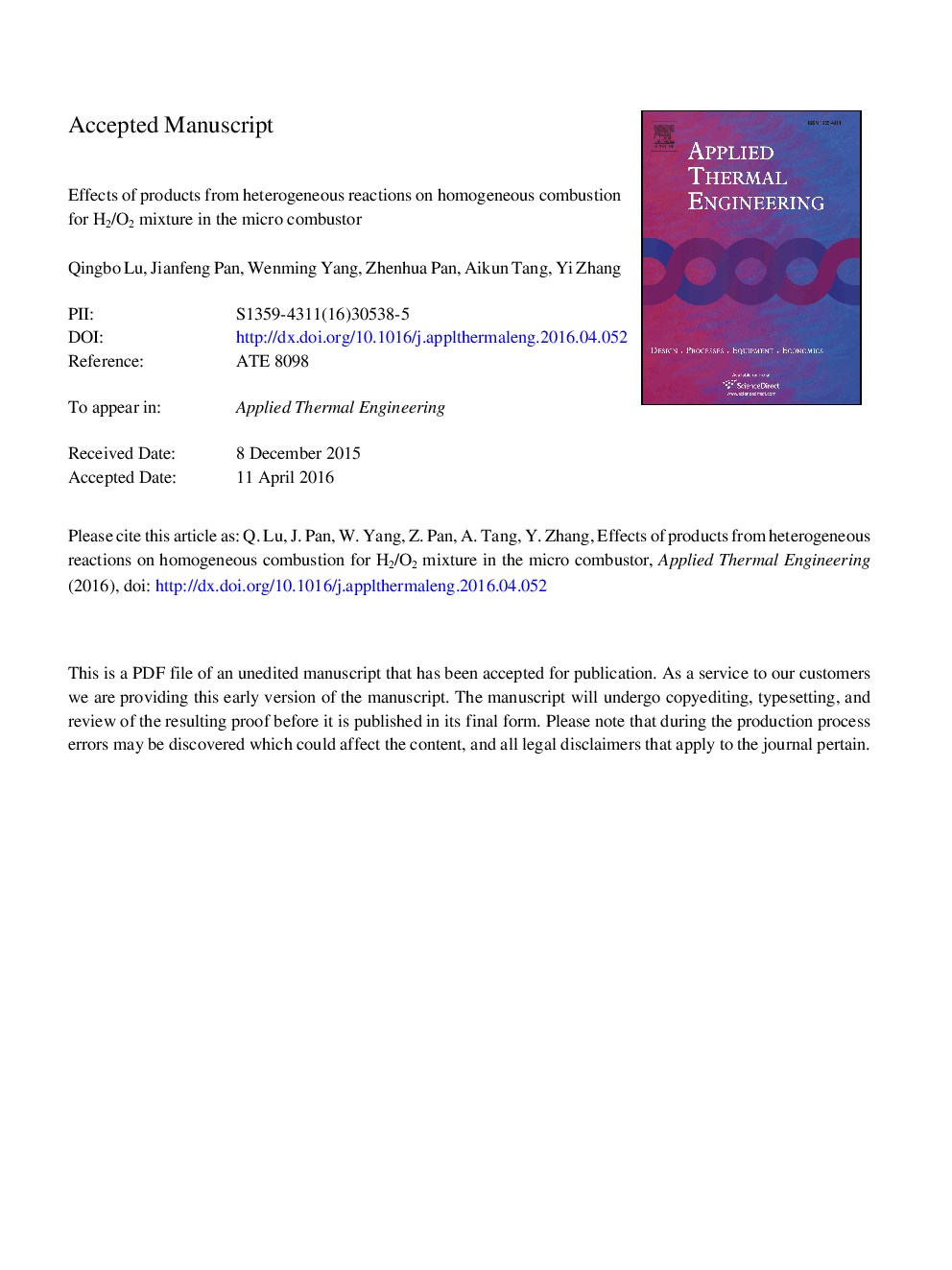| Article ID | Journal | Published Year | Pages | File Type |
|---|---|---|---|---|
| 7048282 | Applied Thermal Engineering | 2016 | 26 Pages |
Abstract
Three-dimensional computational fluid dynamics (CFD) models with detailed homogeneous (gas phase) and heterogeneous (catalytic) chemistries were performed inside a rectangular micro-combustor. The simulation model, based on the chemical reaction kinetics, was validated by experimental data. The effects of the intermediate and final product from heterogeneous reactions on the homogeneous combustion in a catalytic combustor were discussed. The results of numerical simulation show that the presence of intermediate can promote the fuel conversion ratio. The addition of final product can significantly decrease the flame temperature and fuel conversion ratio attributed to the heat loss of reaction and weakness in the combustion intensity. Similar results are obtained when all the products are added as compared to only the addition of the final product. Suppression effect of the final product on homogeneous combustion displays a dominant role among the effects of all products. The combustor performance can be commonly promoted in the hetero-/homogeneous combustion system due to the existence of catalysis.
Keywords
Related Topics
Physical Sciences and Engineering
Chemical Engineering
Fluid Flow and Transfer Processes
Authors
Qingbo Lu, Jianfeng Pan, Wenming Yang, Zhenhua Pan, Aikun Tang, Yi Zhang,
